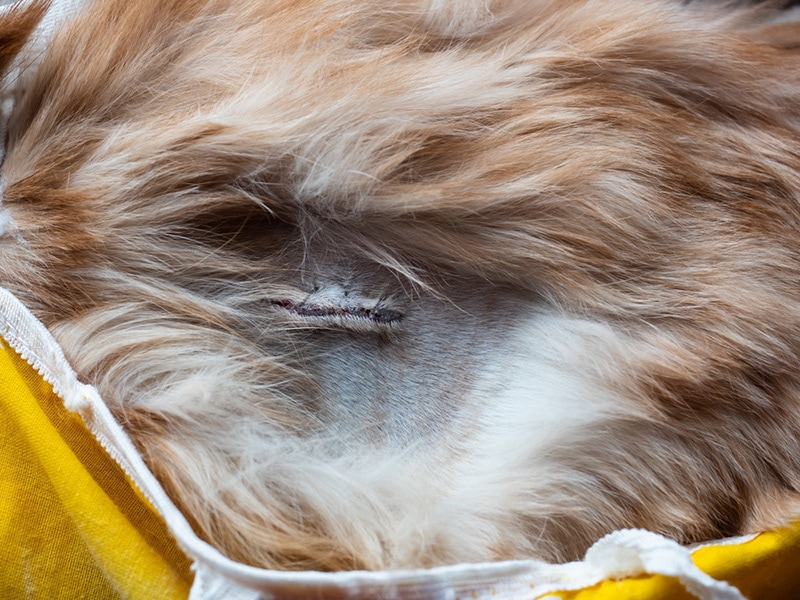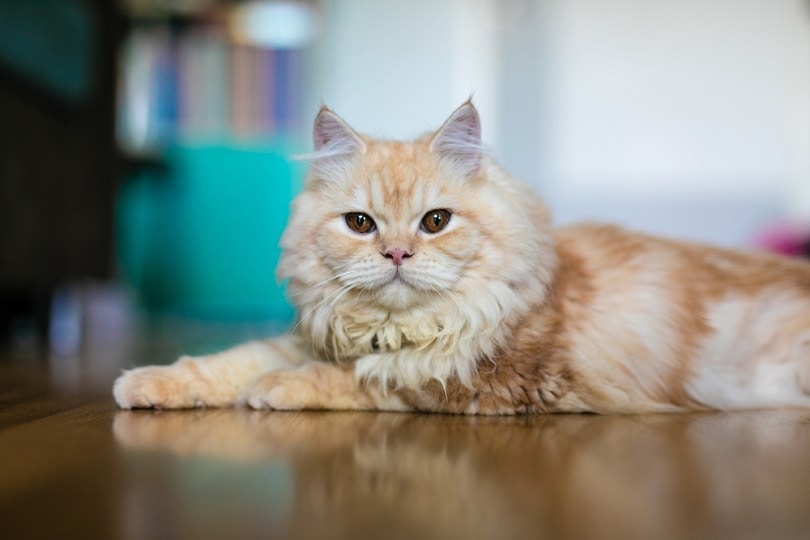How to Clean a Cat’s Nose: 7 Vet-Approved Steps
Updated on
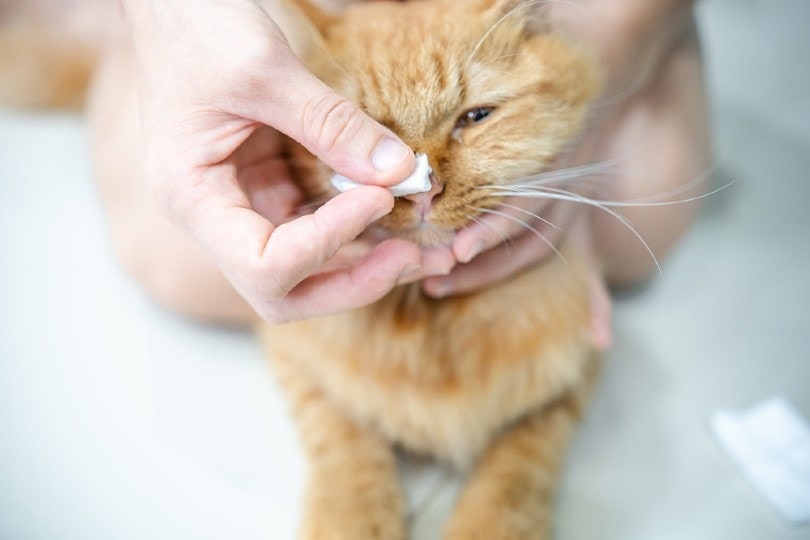
As loving cat owners, nothing is cuter to us than a cat’s nose, and nothing is more heart-warming than a shared “nose boop” between cat and human. Besides being an apparatus for love, the health of your cat’s nose is vital for them to display their natural scent-related behaviors. Additionally, the nose is the respiratory system’s first point of contact, and an unclean nose can limit your cat in their daily activities.
However, we know that cats are proud animals, and many value their personal space above all. You’ll find that not every cat is fond of having its nose touched, let alone cleaned by you. To avoid excess stress or discomfort for your cat, there are a few things to consider before you facilitate a nose cleaning.
Before You Start
Do Cats Need Their Noses Cleaned?
Cat’s are masters at self-grooming, spending on average a whopping 30-50%1 of their day grooming. The nose and face will be part of their cleaning rounds, so unnecessarily cleaning them will be of no use. In fact, they are likely to rewash their nose after you touch them!
For a healthy nose, you shouldn’t need to help your cat clean it. Exceptions occur if your cat has excessive nasal discharge from mucus, boogers, or blood. Crusty mucus around the nasal passage can cause blockages and subsequently back up mucus in the nasal and respiratory passages. Crusty blockages can be difficult for your cat to clear independently, so your assistance may be required.
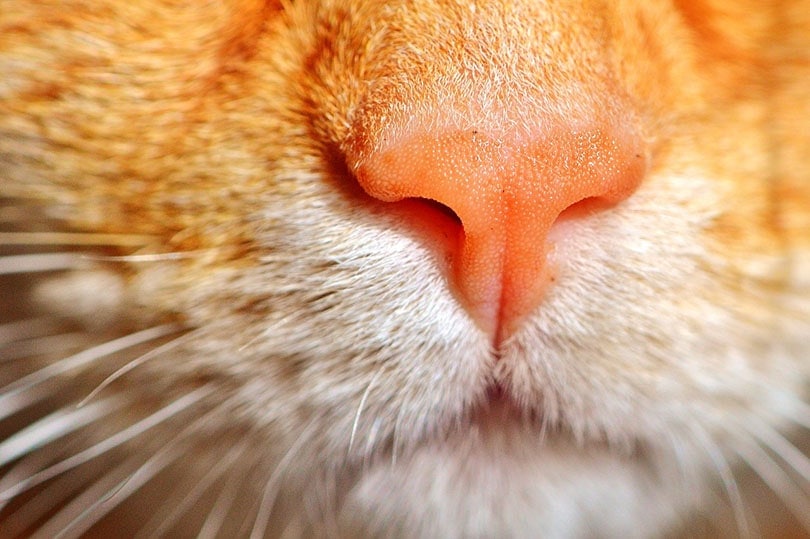
The 3 Common Causes of Crusty Noses in Cat
Allergens/Irritants
The air around us contains many particles of various types that can irritate your cat’s respiratory system. It may range from mild dust particles causing excess mucus production to severe cases of mold particles causing respiratory illness.
Infections
Excess mucus is an immune response to respiratory stress, and this includes infections within this system. Mucus can be a sign of anything from a mild to severe infection, so a vet should be consulted, especially if combined with other concerning symptoms such as sneezing, ocular discharge or decreased appetite.
Poor Grooming
Your cat’s crusty nose may not be due to any excess discharge but rather a poor level of grooming. Grooming quality often drops off in elderly or ill cats, so they will often need your care and attention to help them to groom, including clearing their boogers!
Other causes of nasal discharge in cats may include nasal tumors, foreign material in the nasal cavity and even localized fungal infections.
How to Clean a Cat’s Nose in 7 Steps
1. Early Conditioning
As we all know very well, cats can be pretty particular. Many of them tend to have short fuses and little tolerance for things they don’t like, and this includes touching. While your loving cat may love to be petted, getting touched around the nose is a different story.
When your cat is just a kitten, you can start conditioning them to this kind of touching. Early exposure and positive reinforcement will help make future touching a lot easier. If you need to clean their nose, they already know the drill.
Of course, if you have an older cat with a crusty nose in front of you right now, there’s not much you can do about this.
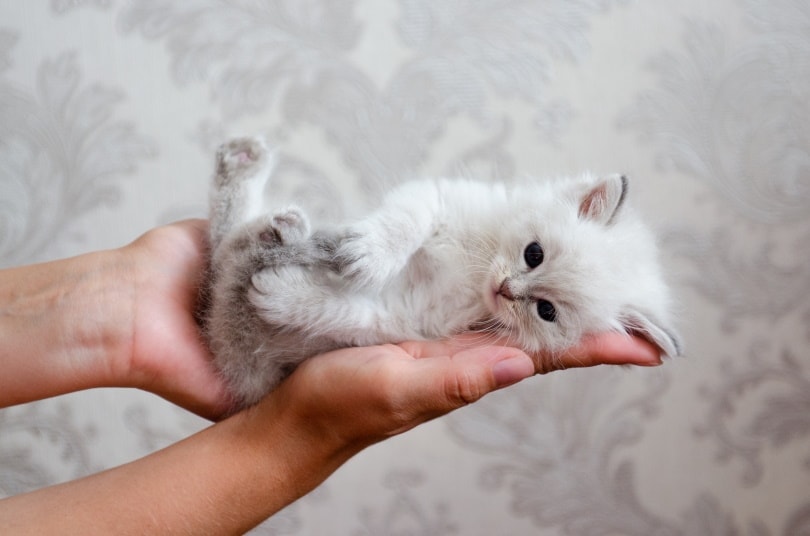
2. Inspection
Before you begin the cleaning process, you should also thoroughly inspect your cat’s nose. Don’t touch them or the nose at this stage, as they will quickly lose patience, making the next steps more challenging. Do a visual look to see if you can identify what is causing the blockage around the nose.
What you should mostly be looking for is the presence of blood. Blood can signify a potential injury to or around the nose, and your attempts at cleaning could irritate the wound or remove a scab causing further bleeding.
Blood can also be a sign of a nose bleed, which may signify a further trauma or other serious problem such as a nasal tumor.
Small smears of blood can be gently cleansed, but if there are blockages of blood or continuous bleeding, you should contact a vet for advice.
3. Gather Materials
The preparation of your nose cleaning endeavor should be just as necessary as the act itself. Ensuring you have all the materials you will need close by will mean that the cleaning can be as quick and efficient as possible.
If you have to pause cleaning to retrieve more cotton balls, your cat will surely take this opportunity to make a quick getaway!
Things you may need:
- Lukewarm or room temperature water (consider a saline solution if there is a wound present)
- Cotton balls and/or q-tips
- A clean dry cloth
- Treats for distraction and reinforcement
- Unscented baby wipes
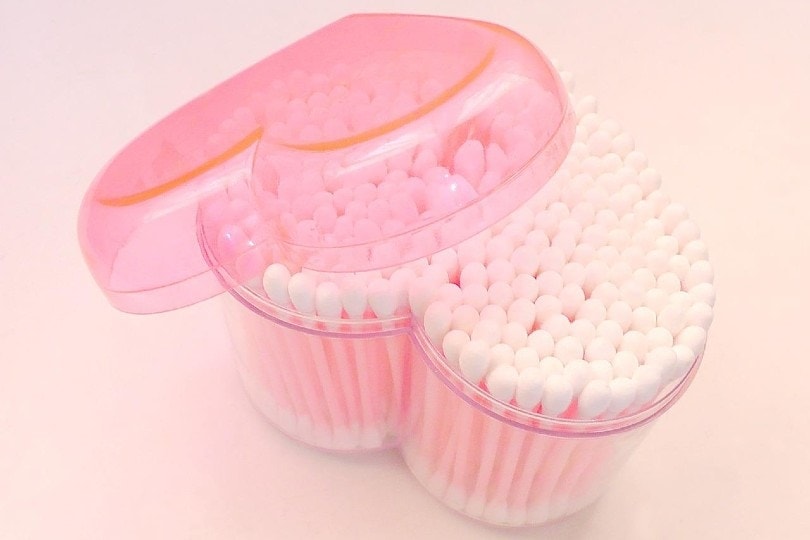
4. Restrain
Once you have all that you need, you need to make sure your subject is in a position to sit for a minute or two while you clean. The term “restrain” sounds very severe, but it doesn’t have to mean using force.
You can “restrain” your cat by someone simply holding onto them and keeping their face still. It could also mean feeding them their favorite treats as an offering for their compliance. How you keep your cat still will depend on a lot of factors, namely your cat’s tolerance.
An easy-going cat may easily tolerate its nose being cleaned with zero issues, but on the other end of the spectrum, an aggressive cat may not be able to be restrained safely in any shape or form.
5. Clean Gently
Use either an unscented moist wipe or a cotton ball and warm water to clean your cat’s nose. These soft moisture textures will help to loosen crusted mucus on the nose. Gently wipe the nose area, be careful not to pluck or pull at crusty pieces.
For extra crusty noses, a damp compress with a cloth can help to loosen things up to make it easier to wipe away.
Try to make the whole experience as quick as possible to reduce the risk of aggression from your cat losing its patience. They will also strongly remember negative experiences, so the longer you take, the harder the next time you clean the nose.
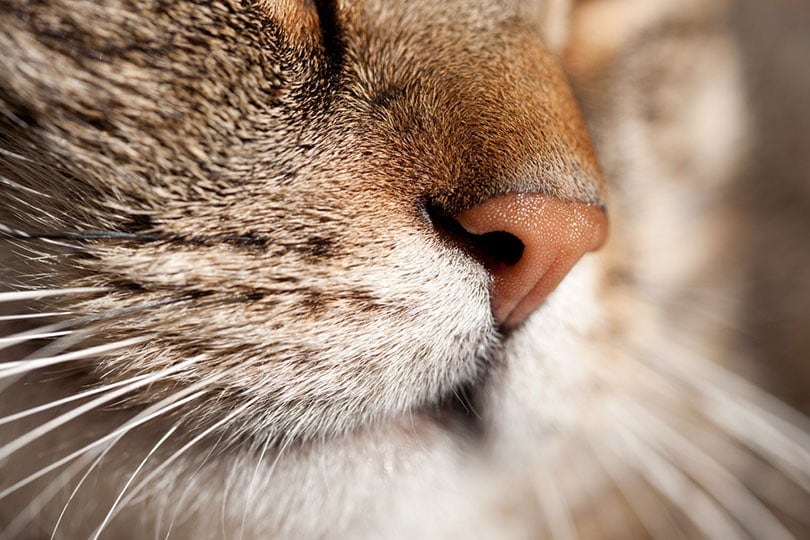
6. Dry Thoroughly
After cleaning, dry your cat’s nose by softly patting it with a dry, clean cloth. This helps reduce the irritation of the cleaning for your cat and keeps any potential nasal irritations drier.
If you used a slightly moist wipe, drying will likely not be needed as moisture will quickly evaporate. If using a dampened cloth, more moisture may be transferred, so excess should be removed.
7. Praise
Your cat will argue that this last step is the most important. After going through the very traumatic ordeal of having their nose touched, they will need lots of love and praise to comfort them. They were courageous, after all! Treats, petting, and a comforting voice can help to calm a stressed cat. If your cat runs away to hide, then let them calm down for a bit on their own.
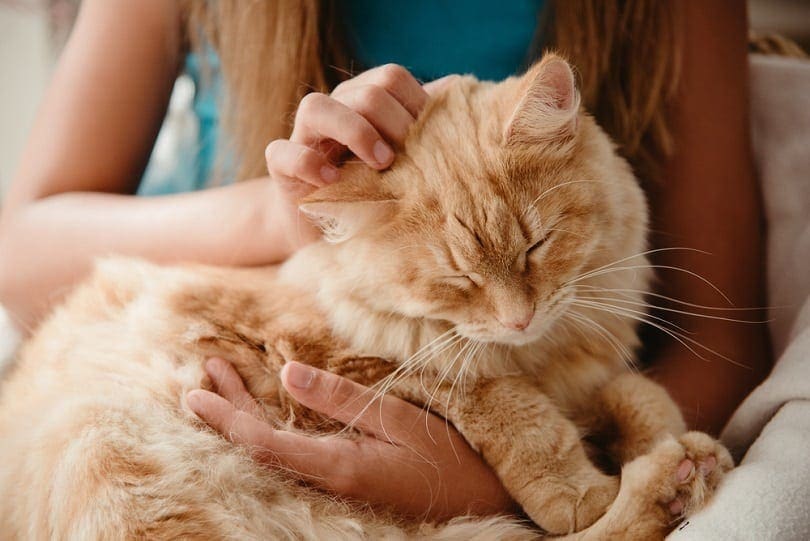
Final Thoughts
Consider yourself lucky if you have a very tolerant and relaxed cat, as this long step-by-step for nose cleaning can easily be shortened to just one step: wipe their nose gently. But for most of us, such an invasion of our cat’s nose will not be received well, so following these steps will make the process easier for us and easier for your beloved cat. If your cat continues to have crusty build up around the nose, you should seek professional veterinary care to figure out both a cause and solutions for the underlying problem.
Featured Image Credit: NONGASIMO, Shutterstock





